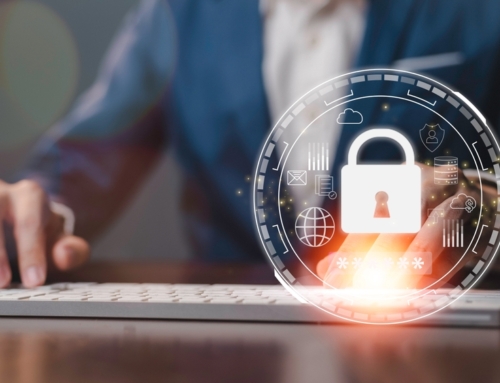Empowering Communities with Essential Safety Measures
Active shooter incidents are higher than ever. 2023 had over 620 mass shootings according to the Gun Violence Archive. A shocking statistic considering that there are 365 days in the year. Corporate employees, as well as any employees working on a school or church campus need to be equipped with effective safety protocols. This applies to faculty, staff, and students.
One such protocol gaining traction is the A.L.I.V.E. protocol — a comprehensive strategy designed to guide individuals in navigating and surviving potentially dangerous situations.
What is The A.L.I.V.E. protocol?
Law Security & Investigations delivers full spectrum high-quality security solutions and teaches the A.L.I.V.E. protocol.
Top Tip: You may be able to take advantage of state funded safety grants, to secure your buildings, staff, sites, faculty, and our children. Training for active shooter situations is crucial for the safety of employees, students, staff, and faculty in corporations and schools.
A stands for Assess: Stay calm and consider your options. Formulate a plan based on the current scenario.
L stands for Leave: If you are able to, leave. Get out of the dangerous area and leave your belongings.
I stands for Impede: If evacuation is impossible, find a place to hide and lock yourself inside. Block the agressors advance.
V stands for Violence: If the above options are not available; take action, arm yourself with what you can and prepare to fight for your life.
E stands for Expose: When the danger is over, come out calmly with your hands up. Identify yourself to law enforcement and first responders, if needed.
Companies and schools should prioritize the safety of their employees, staff, and students. Developing a comprehensive plan to handle active shooter situations achieves this.
“Such a plan, meticulously documented and routinely reviewed, serves as a crucial blueprint for swift and organized responses in times of crisis.” Charles Law, founder of Law Security & Investigations Inc., believes that conducting regular reviews is crucial. These reviews ensure that the plan remains up-to-date and aligned with safety standards and potential threats. “By establishing clear procedures, conducting drills, and fostering a culture of preparedness, organizations can minimize the impact of active shooter incidents and enhance the overall safety and security of their environments.”
Assess: The Power of Calm Composure
In critical situations, maintaining a state of calm composure is paramount. This pivotal aspect of the A.L.I.V.E. protocol, ‘Assess,’ underscores the significance of staying composed in the face of adversity. People must be equipped to assess their surroundings fast but thoughtfully. Being able to evaluate potential threats and formulate effective plans tailored to the unfolding circumstances is the goal. By exploring scenarios that demand quick thinking, it encourages individuals to cultivate these skills. It empowers them to contribute proactively to their own safety and the well-being of those around them.
Leave: Evacuation as the Primary Option
The ‘Leave’ component of the A.L.I.V.E. protocol emphasizes the critical importance of prioritizing personal safety by swiftly evacuating the danger zone whenever feasible. This aspect is key. Place your well-being above belongings in emergency situations. It’s important to understand the importance of planned evacuation plans and having clear routes for leaving buildings in workplaces and schools. By fostering an understanding of the urgency surrounding leaving the danger zone, individuals can contribute to creating a safer environment for themselves and others.
The importance of having designated evacuation routes and assembly points in corporate and educational settings is huge. Encouraging preparedness through drills and education further ensures that the execution of evacuation plans is swift, efficient, and can significantly mitigate potential risks.
Impede: Securing Safe Spaces
We explore the concept of impeding, where evacuation might not be an immediate option. We provide guidance on finding secure hiding places, locking doors, and barricading entrances to delay potential threats. The course illustrates the importance of situational awareness and quick thinking in ensuring the safety of everyone involved.
Violence: A Last Resort for Self-Defense
Delving into the controversial facet of the A.L.I.V.E. protocol, the ‘Violence’ stage acknowledges the difficult reality that, in some instances, violence may become a last resort for self-defense. This part stresses the need for self-defense but also goes into real life situations. You have to learn to adapt, and that means using resources in dangerous situations when there are no alternatives.
By openly addressing this aspect, we highlight the need for comprehensive training programs that teach basic self-defense techniques. Teaching people how to protect themselves and others is very important for creating a feeling of safety in workplaces and schools. While acknowledging the gravity of resorting to violence, it is crucial to underscore the role of responsible training and preparedness in creating a resilient community capable of navigating extreme circumstances.
Expose: Safe Reemergence and Communication
The ‘Expose’ phase in the A.L.I.V.E. protocol signifies the crucial moment when individuals, once the imminent danger has passed, must safely reemerge from their places of concealment. This involves calmly presenting oneself with hands raised to identify to law enforcement or first responders that they are not a threat.
Effective communication during this stage is paramount in preventing misunderstandings and facilitating a smooth transition from crisis to resolution. Stressing the significance of clear and concise communication, individuals should be guided on how to approach authorities, providing essential information without causing panic or confusion.
By fostering a cooperative atmosphere and emphasizing the importance of compliance, this phase ensures that law enforcement and first responders can swiftly assess the situation, distinguish between potential threats and innocent parties, and bring the incident to a safe conclusion.
2024 is a year in which safety and security are at the forefront of many people’s minds. In a world filled with uncertainties, the A.L.I.V.E. protocol emerges as a valuable tool for corporate employees, faculty, staff, and students to navigate potentially dangerous situations. By assessing, leaving, impeding, considering violence as a last resort, and exposing themselves safely, individuals can contribute to creating safer environments within their workplaces and educational institutions. Implementing and practicing the A.L.I.V.E. protocol ensures a proactive and prepared response to unforeseen threats, fostering a culture of safety and resilience.






